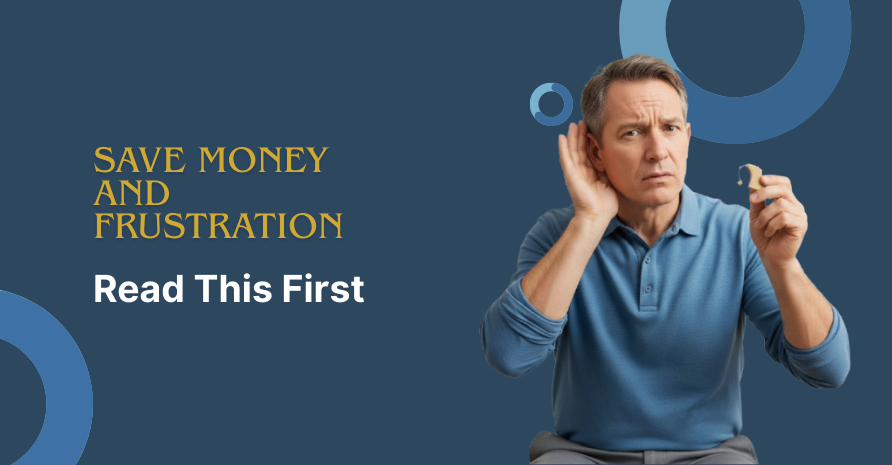
Hearing Aid Feedback: How to Silence the Whistle and Hear the World Clearly

If you have ever used a hearing aid, you must be familiar with that shrill sound or the feedback as it is commonly called. This is a vexing and frequently awkward situation that occurs in almost 33% of hearing aid wearers at some time. Feedback in hearing aids is annoying, demoralizing, and reduces the quality of using such helpful devices. But the good news? It's preventable.
So, in this article, let’s take a look at what causes hearing aid feedback, how it can be minimized, and the best practices for achieving the best sound possible.
What is Hearing Aid Feedback

Feedback in a hearing aid is the term used when the sound collected by the hearing aid’s microphone is returned to the speaker in a continuous whistling sound. These can be due to the wrong size, build-up of ear wax or a problem with the device itself. Understanding the cause of these helps the users to find ways of avoiding them in order to have a comfortable time without having to stop the hearing process due to these.
What Does Hearing Aid Feedback Sound Like

Hearing aid feedback may be described as a kind of squealing, whistling or buzzing sound. It may be mild and random or severe and continuous depending on the cause. Some users characterize it as a kind of feedback sound, something like a microphone being positioned near a speaker.
This noise is usually heard at certain times when it's amplified by touching the hearing aid, putting your hand close to the ear or when something covers the hearing aid like a scarf or hat. Feedback is always annoying and makes it difficult to have a productive conversation, capture attention and decrease overall hearing satisfaction.
The first thing that must be understood is that feedback can be recognized by its sound, which will help to troubleshoot the problem and solve it.
Types Of Hearing Aid Feedback
- Acoustic Feedback:
This is the most common type, caused by amplified sound escaping from the hearing aid and re-entering the microphone. It often results in a high-pitched whistle or squeal and is typically triggered by a poor fit, earwax, or external obstructions like clothing or hands near the ear.
- Mechanical Feedback:
This is when sounds produced by some parts of the hearing aid including the receiver or the tubing are detected by the hearing aid’s microphone. It is usually linked with usage or a low quality of construction of a particular device.
- Electronic Feedback:
This type arises from internal issues within the hearing aid, such as faulty circuitry or damaged components. It may produce irregular, static-like noise that doesn't resemble the typical whistle of acoustic feedback.
Why Do Hearing Aids Squeal or Whistle When Not In Use
It is also found that hearing aids whistle even when not in use because of the residual sound feedback. This occurs when sound that is being amplified gets out of the particular device and gets into the microphone and forms a loop. Here are some common reasons:
- Poor Fit: If the hearing aid doesn’t fit snugly into the ear then the sound that enters the aid will whistle. This is experienced most commonly when the device is not correctly inserted or if it has changed position.
- Earwax Buildup: Wax build up in your ear canal may prevent the sound waves from reaching your device or even reflect the sound back into the device if it is not in use.
- Physical Obstructions: A case or pocket may build pressure or give rise to reflections that produce feedback each time the hearing aid is kept.
- Malfunctioning Components: A microphone or receiver may be damaged and, even if the hearing aid is not turned on, it may capture background sounds and produce whistling.
How Do You Stop A Hearing Aid From Squealing
Feedback, or squealing in hearing aids, is rather irritating, but present-day developments, such as the Beacon OTC Hearing Aids, do not allow for it. These are FDA registered, non-prescription devices that come with an enhanced feedback cancellation technology that eliminates the whistling sound by avoiding the formation of an unwanted sound loop.
The Beacon hearing aids are provided with the latest noise cancellation and feedback elimination techniques for clear sound in all surroundings. Using their self-fitting solutions, it is possible to adjust all the features of the hearing device without visiting clinics and having a perfect fit for your needs.
These fashionable hearing aids don’t just stop squealing—they also offer:
- Superior sound quality: Dynamic compression at a wide frequency offers good sound clarity.
- Bluetooth compatibility: Share and play music and answer or make calls on an iPhone or Android without removing your headphones.
- Comfortable wear: RIC technology is used to refer to discreet receiver-in-canal which ensures comfort the entire day.
- Long-lasting use: Up to 15 hours per charge of the earphones when using a portable charging case.
These come with three presets and one mode that is variable depending on the situation; these devices eliminate the squeal and provide high quality listening. Look at the Beacon OTC Hearing Aids to find out how to hear without any interference.
Read more about Beacon OTC Hearing Aids here.
Conclusion
Hearing aid feedback, although irritating, is not a complete stop sign to receiving better hearing. When you know the causes—acoustic, mechanical, or electronic—you can determine measures to avoid or reduce them. Wearing the right size, cleaning your device, and selecting hearing aids that have feedback suppression features will help you to get uninterrupted sound.
Do not let feedback become an obstacle for you to hear the world clearly. Visit the Beacon OTC Hearing Aids today and start on this new journey of whistle-free improved hearing.









